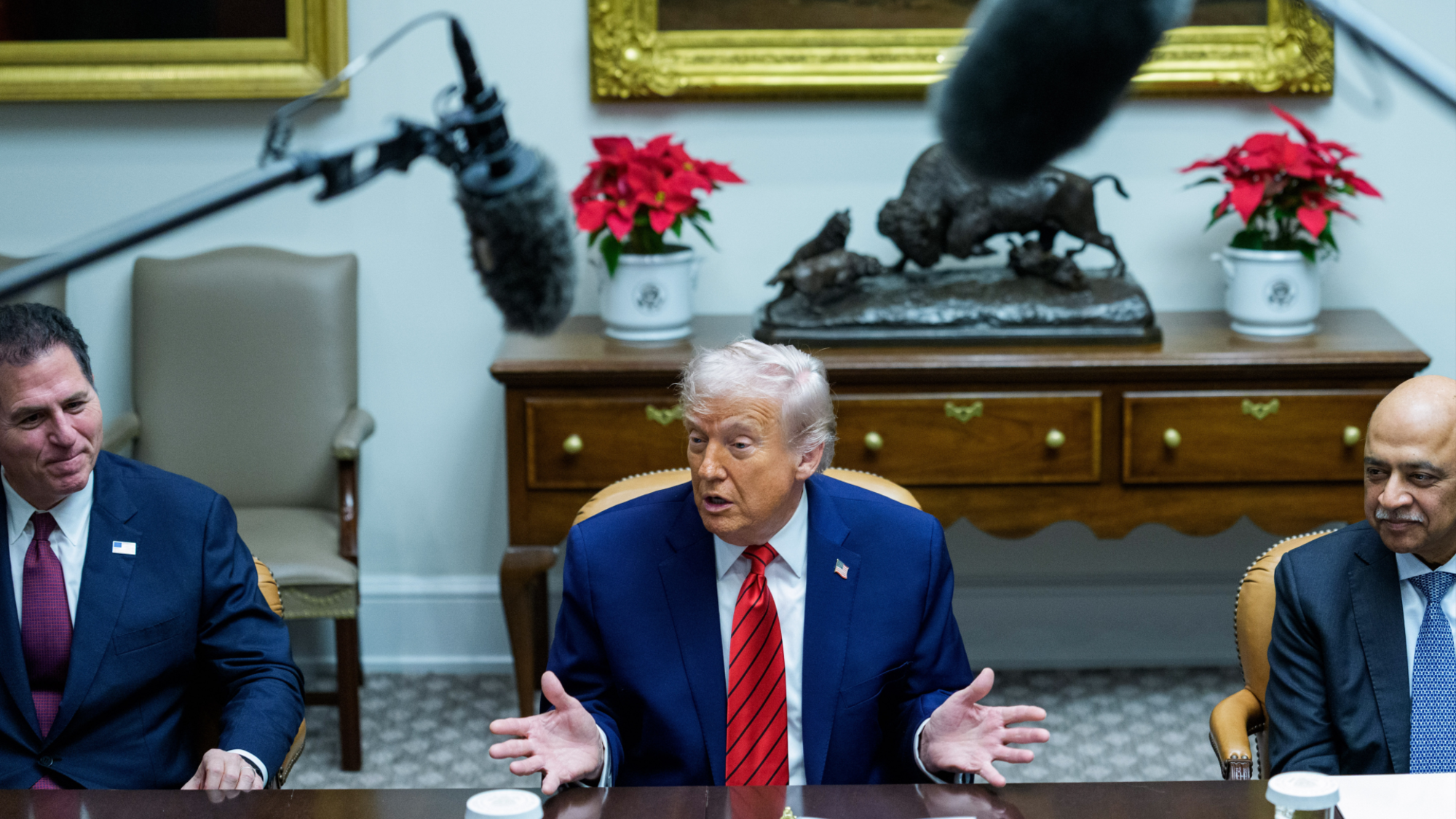Bibi turns on the charm
In the fight over Israel's borders, Netanyahu takes the upper hand


When Israel's Benjamin Netanyahu spoke to Congress this week, he started the speech by congratulating President Barack Obama on killing Osama bin Laden. He bookended the remarks by expressing his appreciation for Obama's position that peace could not be imposed in the Israeli-Palestinian conflict. In fact, the address was peppered with compliments to the American president, who was traveling through Ireland and the United Kingdom, and to the American people.
Yet the speech, and its reception, deftly shamed Obama for his rush to show up Israel and pressure the U.S. ally into concessions. It also established the Israeli prime minister as the real statesman in the conflict.
Last week, the White House promoted the president’s speech on the Mideast as Cairo II, one that would address the Arab Spring with specific American approaches to freedom and self-determination in the region. Instead, Obama delivered a mix of generalizations about democratization that could just as easily have been delivered by George W. Bush and a short list of foreign-aid pledges that sounded more like a State of the Union presentation.
The Week
Escape your echo chamber. Get the facts behind the news, plus analysis from multiple perspectives.

Sign up for The Week's Free Newsletters
From our morning news briefing to a weekly Good News Newsletter, get the best of The Week delivered directly to your inbox.
From our morning news briefing to a weekly Good News Newsletter, get the best of The Week delivered directly to your inbox.
In fact, Obama only included one significant new, specific item in his speech:
"We believe the borders of Israel and Palestine should be based on the 1967 lines with mutually agreed swaps, so that secure and recognized borders are established for both states. The Palestinian people must have the right to govern themselves, and reach their full potential, in a sovereign and contiguous state."
The schooling Netanyahu delivered on Tuesday and Congress's enthusiastic response should definitely leave an impression on the president.
Even this isn't all that new. It’s no secret that U.S. plans for a two-state solution have been based for several years on the 1967 lines, with land swaps to account for demographic changes. Hillary Clinton publicly said something similar in 2009. But the secretary of state is not the president, and no president has given that concession publicly, or made it into an implicit demand.
A free daily email with the biggest news stories of the day – and the best features from TheWeek.com
The Israelis exploded in anger. They insist — rightly — that any decision on borders has to come from negotiations with Palestinians that recognize the right of Israel to exist at all. To start off with the 1967 border concession just after the Palestinian Authority signed a partnership deal with Hamas is seen in Israel as a retreat. In the end, Hamas rejected the idea out of hand anyway, demanding a return to the 1948 border as the starting point of negotiations, even while they refuse to change their charter that calls for the destruction of Israel altogether.
Netanyahu arrived in Washington the day after Obama's speech, but not before publicly rejecting the 1967 lines as "indefensible." The two allies held an awkward press conference the next day, at which the Israeli prime minister lectured the president on Israeli history and security, much to Obama's obvious unease. In doing so, Netanyahu attracted criticism about appearing ungracious to his host, who is still the head of the nation that remains Israel’s most important ally.
Obama responded two days later by telling the Jewish lobbying group AIPAC somewhat defensively that of course the borders between the two states would not resemble the 1967 borders:
"By definition, it means that the parties themselves — Israelis and Palestinians — will negotiate a border that is different than the one that existed on June 4, 1967. That's what mutually agreed-upon swaps means. It is a well-known formula to all who have worked on this issue for a generation. It allows the parties themselves to account for the changes that have taken place over the last 44 years.”
If that's true, and to a large extent it is, then why did Obama bother to mention it at all, especially when Netanyahu objected to the idea when asked by the White House prior to the first speech? The border will have to recognize demographic and security concerns for both states; that much is obvious. There is no need to publicly pin Israel or the United States down to 1967 lines that don’t reflect current reality anyway, especially when the Palestinians have decided rapprochement with a terrorist group is more important than the peace process.
Instead of scolding and lecturing again, Netanyahu turned on the charm with Congress — and Congress responded. The Israeli deftly handled a protest in the gallery by noting that such dissent would never be tolerated in Tehran, allowing him a natural segue into a lengthy discourse about our common enemy in Iran. He lauded American support for Israel and the partnership that helps Israel secure its own nation without American military assistance. And Netanyahu took every opportunity to praise Obama while making it clear that the president had gone in exactly the wrong direction regarding the peace process.
That message resonated with Republicans and Democrats alike. Even before Netanyahu’s speech to Congress, members of Obama’s own party had openly opposed Obama’s calls for a return to the 1967 border. Senate Majority Leader Harry Reid sharply criticized the imposition of terms outside of negotiation; he avoided using Obama's name, but the message was clear.
So was the thunderous applause Netanyahu received from the joint session of Congress. According to ABC News, Netanyahu got more standing ovations than Obama's last State of the Union speech, 29 as compared to 25 in Obama’s much longer January 2011 address. One of the longest rounds of applause came from Netanyahu's defiant statement, "Israel will not return to the indefensible boundaries of 1967," a direct reply to Obama.
Congress reacted to the power of Netanyahu's words, his obvious affection for America, and his steadfast stance against terrorism and insistence on negotiation rather than extortion. Even if Netanyahu's lecture on Friday had no impact on Obama, the schooling Netanyahu delivered on Tuesday and Congress's enthusiastic response should definitely leave an impression on the president — or at least leave a mark.
Edward Morrissey has been writing about politics since 2003 in his blog, Captain's Quarters, and now writes for HotAir.com. His columns have appeared in the Washington Post, the New York Post, The New York Sun, the Washington Times, and other newspapers. Morrissey has a daily Internet talk show on politics and culture at Hot Air. Since 2004, Morrissey has had a weekend talk radio show in the Minneapolis/St. Paul area and often fills in as a guest on Salem Radio Network's nationally-syndicated shows. He lives in the Twin Cities area of Minnesota with his wife, son and daughter-in-law, and his two granddaughters. Morrissey's new book, GOING RED, will be published by Crown Forum on April 5, 2016.
-
 What role will Trump play in the battle over Warner Bros. Discovery?
What role will Trump play in the battle over Warner Bros. Discovery?Today’s Big Question Netflix and Paramount fight for the president’s approval
-
 ‘The menu’s other highlights smack of the surreal’
‘The menu’s other highlights smack of the surreal’Instant Opinion Opinion, comment and editorials of the day
-
 Education: More Americans say college isn’t worth it
Education: More Americans say college isn’t worth itfeature College is costly and job prospects are vanishing
-
 The FCC needs to open up about LightSquared
The FCC needs to open up about LightSquaredfeature A politically-connected company that wants to build a massive 4G internet network seems to have benefited from some curious favors from the feds
-
 Do you believe in magic?
Do you believe in magic?feature The House speaker's debt-ceiling proposal is smoke and mirrors. That's what's good about it
-
 Will both sides blink on the debt ceiling?
Will both sides blink on the debt ceiling?feature With the financial credibility of our nation at stake, and both parties facing massive political risks, lawmakers might agree to a grand bargain after all
-
 Dine and dash?
Dine and dash?feature Politicians are jockeying for advantage as the bill comes due on our gaping national debt. But without an agreement soon, we'll all be stuck with the check
-
 The GOP's dueling delusional campaign ads
The GOP's dueling delusional campaign adsfeature Slick ads attacking Jon Huntsman and Tim Pawlenty as reasonable moderates show just how divorced from reality today's Republican Party is
-
 Get rich slow
Get rich slowfeature A cheap U.S. dollar is no fun, but it will get the job done
-
 Bin Laden, the fringe Left, and the torturous Right
Bin Laden, the fringe Left, and the torturous Rightfeature The killing of the architect of September 11 has provoked predictable remonstrance from the usual suspects
-
 What the GOP can — and can't — learn from Canada's Conservatives
What the GOP can — and can't — learn from Canada's Conservativesfeature Canada's right-wing party won control of Parliament this month — but their strategy on immigration and hardline Tea Party-types wouldn't work in the U.S.
